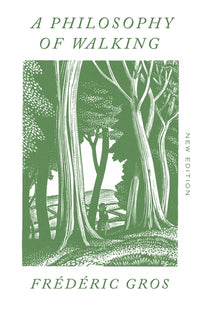The Case for Walking Slowly
The illusion of speed is the belief that it saves time, but Frédéric Gros finds that if anything, haste accelerates time, especially when it comes to walking.

I will always remember what he said. We were climbing a steep path in the Italian Alps. Mateo was my senior by at least half a century, being over seventy-five years old at that time. He was whipcord-thin, with big rough hands, a lined face and an erect posture. He kept his arms folded when walking, as if feeling cold, and wore beige canvas trousers.
It was he who taught me to walk. Although I was saying just now: you don’t learn to walk, at least here, no technique, no panic about getting it right or not, about doing it this way rather than that, no pressure to pull yourself together, practise, concentrate. Everyone knows how to walk. One foot in front of the other, that’s the proper rhythm, the good distance to go somewhere, anywhere. And all you have to do is resume: one foot in front of the other.
I say he ‘taught’ me for the sake of brevity and effect. We had been walking for several minutes on a climbing path and began to feel a sort of pressure from behind. A group of young people, boisterous, wanting to hurry and overtake us, trod a little noisily to make their presence felt. So we stood aside and let the loud, hurrying troupe pass, and were thanked with slightly smug smiles. It was then, as he watched them recede, that Mateo said: ‘Well look, they’re afraid they won’t get there, wanting to walk at that speed!’
The lesson was that in walking, the authentic sign of assurance is a good slowness. What I mean is a sort of slowness that isn’t exactly the opposite of speed. In the first place it’s the extreme regularity of paces, a uniformity. Here one might almost say that a good walker glides, or perhaps that his legs rotate, describing circles. A bad walker may sometimes go fast, accelerate, then slow down. His movements are jerky, his legs form clumsy angles. His speed will be made of sudden accelerations, followed by heavy breathing. Large voluntary movements, a new decision every time the body is pushed or pulled, a red perspiring face. Slowness really is the opposite of haste. When we reached the summit and caught up with the ‘sportsmen’, they were sitting down, discussing their time with enthusiasm and making incomprehensible calculations. The reason they were hurrying like that was that they wanted to make a particular time. We stopped for a minute to look at the view. Then, while the group continued to make long commentaries and interminable comparisons, we slowly started back.
The illusion of speed is the belief that it saves time. It looks simple at first sight: finish something in two hours instead of three, gain an hour. It’s an abstract calculation, though, done as if each hour of the day were like an hour on the clock, absolutely equal.
But haste and speed accelerate time, which passes more quickly, and two hours of hurry shorten a day. Every minute is torn apart by being segmented, stuffed to bursting. You can pile a mountain of things into an hour. Days of slow walking are very long: they make
you live longer, because you have allowed every hour, every minute, every second to breathe, to deepen, instead of filling them up by straining the joints. Hurrying means doing several things at once, and quickly: this; then that; and then something else. When you hurry, time is filled to bursting, like a badly-arranged drawer in which you have stuffed different things without any attempt at order.
Slowness means cleaving perfectly to time, so closely that the seconds fall one by one, drop by drop like the steady dripping of a tap on stone. This stretching of time deepens space. It is one of the secrets of walking: a slow approach to landscapes that gradually renders them familiar. Like the regular encounters that deepen friendship. Thus a mountain skyline that stays with you all day, which you observe in different lights, defines and articulates itself.
When you are walking, nothing moves: only imperceptibly do the hills draw closer, the surroundings change. In a train or car, we see a mountain coming towards us. The eye is quick, active, it thinks it has understood everything, grasped it all. When you are walking, nothing really moves: it is rather that presence is slowly established in the body. When we are walking, it isn’t so much that we are drawing nearer, more that the things out there become more and more insistent in our body. The landscape is a set of tastes, colours, scents which the body absorbs.
— An edited excerpt from A Philosophy of Walking by Frédéric Gros
[book-strip]
